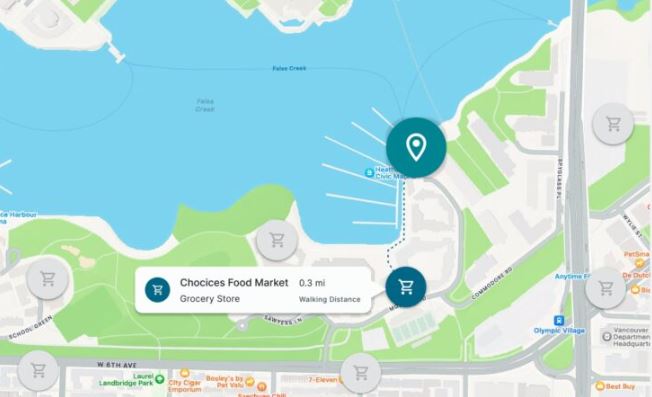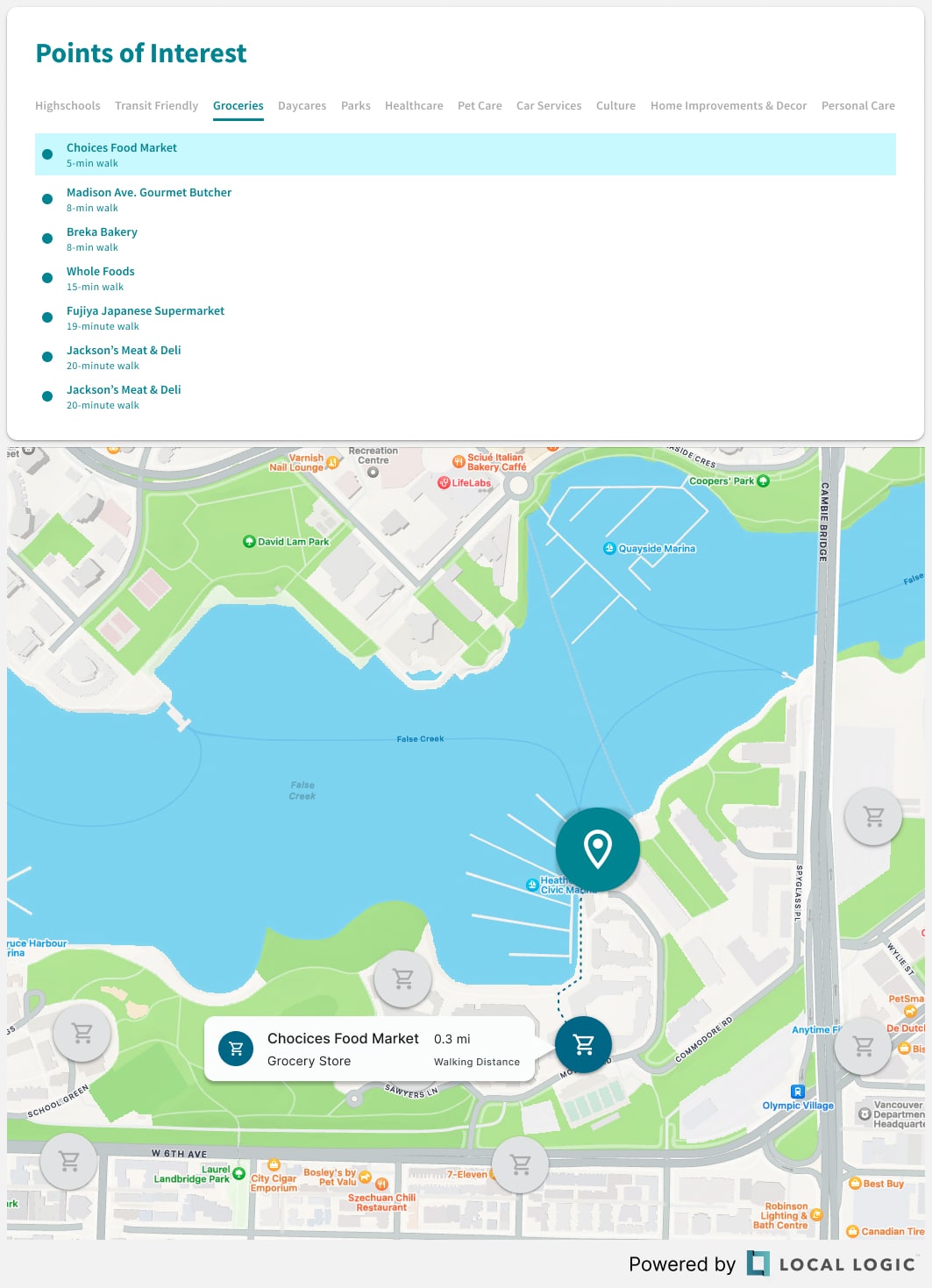Oakley Signs Joins Forces with Local Logic to Bridge the Gap Between Physical Signage and Digital Insights
Partnerships
| 12 Nov 2025

Location impacts how cities are developed and how communities live — or thrive — within them. Building more efficient and equitable communities involves a deep knowledge of the built world. But understanding the nuances of location can prove itself to be difficult. Beyond the four walls of a place lie elements that shape lifestyles, behaviors, as well as social and environmental implications.
To find out what makes a neighborhood livable and desirable, Local Logic leverages location intelligence and precise analytics, and we are excited to announce that we have added six new Points of Interest (POI) categories to help you better understand the value of an asset.
Traditionally, real estate information focuses on the asset itself — think year of build, type of renovation work that has been done, and amenities within the site (such as access to parking). What’s missing is the surrounding data. Factors like proximity to groceries, transit options, and wellness facilities (among others) pertain to a location’s desirability and may very well have a greater influence on decisions to buy or build.
Part of making cities more livable involves getting a sense of a place to understand the experience of the location. However, it’s hard to zero in on why a particular location evokes certain feelings or why some locations are preferred by certain people and not by others.
Previously, decisions relied mostly on intuition, where objective data didn’t exist yet. People often resort to quick Google searches and anecdotes from friends and family to identify nearby activities and amenities, approximating how those would fit into their lifestyles. This information gap makes it difficult for developers, investors, and homeseekers to make a well-informed decision when choosing what to build or where to live.
To bridge this gap, Local Logic quantifies what was once subjective with insights into a location’s characteristics, regardless of personal opinion, and without having to be on-site. Building on 85 billion data points analyzed per month, our POI API allows customers to understand granular information about a given location in Canada and the US at the address level.
Hot on the heels of our 15 existing POI categories, we’re launching six new categories to round up our database and bring better location insights to our customer base.
Instead of relying on Google searches, our hyperlocal data helps you see which amenities and destinations are close to a particular location. For example, grocery icons show up when you click on the Grocery category, giving you the precise distance in minutes between the property you’re interested in and grocery shops nearby.

Quality of life depends on what’s important to a person and what they need close by. Since different people value different aspects of a location, we added more POI categories to the ones that were already included in our API (i.e. groceries, shopping, nightlife, restaurants, cafes, daycares (in Canada), bus stops, rapid transit, train stations, parks, healthy restaurants, fitness, and sports facilities) to consider individuals’ unique needs within a neighborhood.
Based on our consumers’ priorities, here are the new data points returned:
Though health is holistic and can include elements such as commute options, bike lanes, parks, and green spaces, access to health resources and the availability of healthcare services/practitioners is critical to an individual’s well-being. Knowing that you can seek the medical support you need through proximity to hospitals, clinics, and emergency centers offers a sense of peace.
Pet owners are more likely to exercise, be less lonely and stressed, and have stronger social ties. So, building a pet-friendly neighborhood is considered an investment in our own well-being and health. Adapting an environment for pets with veterinary care, food supply stores, grooming shops, and pet training facilities can help individuals care for their furry friends and is often paramount in choosing where to live.
Nearby gas or electric charging stations can make a location more desirable, depending on which kind of lifestyles people subscribe to. While electric vehicles (EV) might be on the rise, certain homeseekers may be reluctant to give up their cars. In this case, location has a larger social impact, which includes concerns surrounding climate change, GHG emissions from transportation, and access to sustainable energy.
A sense of place can be created through art, culture, and science while enhancing the character of a community and building economic strength. Through art galleries, movie theaters, museums, concert venues, botanical gardens, and nature centers, people can come together to foster greater community engagement.
The convenience of having nearby furniture and home decor shops, hardware and appliance stores, and home centers can help buyers and renters transform their residences into a comfortable, functional space that meets their individual needs.
Self-care’s growth in importance contributes to how a neighborhood fares in terms of wellness, as it correlates with an individual’s well-being. In choosing a location, the convenience of being able to treat oneself to massages, manicures, and spa sessions close to home can be particularly important.
Our data extends beyond gut feelings by highlighting what makes a neighborhood unique to help craft the narrative behind a location, regardless of asset type. These data points, from nearby health facilities to cultural venues, speak to the character of the neighborhood.
With contextual POI data pertaining to specific locations, homeseekers can then find a property that best matches their lifestyles and values, enabling them to make smart purchasing decisions. By doing so, they will not only find a property but also a neighborhood that matches their search criteria, thus improving the home buying experience.
Building better cities begins with understanding the consumer side and the impact the built environment has on communities. Access to objective and quantifiable data can assist commercial real estate developers in having a stronger grasp on the location characteristics that people are looking for, whether it is to build a residence, office, or other types of structure.
Our POI datasets enable developers to make informed decisions about what and where to build while evaluating the impact of their choices on the neighborhood. Providing data on what people actually want can help investors predict location value more accurately and maximize their ROI on real estate projects.
💡 Curious about location insights?
Get a demo to learn how to grow your business with location data.